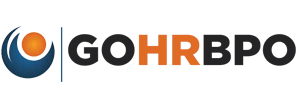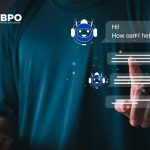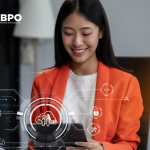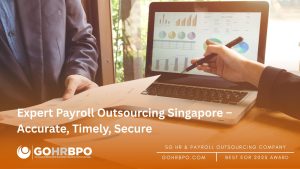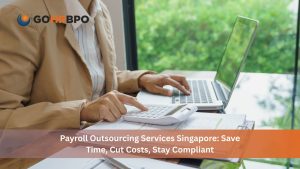Introduction
I have been through enough onboarding processes to know how messy and time-consuming they can get. It consists of too many forms, similar information and training that doesn’t really stick. It used to feel like more of a checklist than a welcome.
That’s when we started looking into AI, and it changed everything. With simple things like chatbots answering common questions and training that actually adapts to the person, you can make onboarding way smoother for both the HR team and the new hires.
Big companies like IBM, Hitachi, and Unilever have seen the same thing, cutting onboarding time by up to 60% and keeping people way more engaged from day one. In this guide, I’ll walk you through what we learned and how you can build a smarter, faster onboarding process using AI too.
Define Clear Goals
- First, you need to define clear goals about what you want AI to help you with.
- Once you know what you want to do with the help of AI, set clear goals. This way, you will be able to pick up the right tools, and it will make it easier for you to track whether it’s making any difference.
- Take inspiration from real examples. Like Hitachi, focused on reducing onboarding time and lightening the HR team’s workload, and ended up saving four days per hire.
- Let those goals shape your approach. With a clear focus, setting up AI tools and processes becomes much more straightforward.
Map Your Existing Process
- One thing I always recommend is documenting every single step in the onboarding process. That includes forms, IT setup, team introductions, training, and everything in between.
- These little handoffs between departments are often where things get delayed. It’s usually not one big issue, but a bunch of small steps that slow things down.
- Hitachi’s old process used to take 10 to 15 days. After they brought in AI, that dropped to just a few days. A pretty big improvement.
- I think the best strategy here is to take a step back and look at where things keep getting stuck or repeated. These are the kinds of tasks where AI can help you.
Also Read: Key Risks in Payroll Outsourcing in 2025: A Singapore Perspective
Choose the Right Technology
When you become clear with your goals and the tools you need to use, it becomes easier to understand what you need help with exactly:
- For instance, to save time from answering the same questions all the time, you can take the help of an AI chatbot to do that all for you. It can handle FAQs, send reminders, and also help new hires with most of their questions.
- If paperwork is taking time, tools with OCR (optical character recognition) or NLP (natural language processing) can scan forms and give you the important info automatically.
- Personalized training platforms are also super helpful. They adjust the learning content based on the new hire’s role, so they’re not wasting time on irrelevant info.
- I have found platforms like PeopleCentral really helpful because everything’s in one place: recruitment, onboarding, payroll, attendance, scheduling, it’s all on a single dashboard.
- The built-in AI is a big bonus. It can literally do everything you might be struggling to do.
Automate Paperwork & Compliance
- One of the biggest time savers, I think, is using AI to cut down manual data entry. It takes a lot of time, and I don’t think it requires a human to do it.
- AI tools can do all of this work and make sure nothing important gets skipped.
- Companies like Hitachi and Texans Credit Union saw major time savings just by automating things like IT setup and HR paperwork.
- The best part? It gives free time to your HR team to focus on what is really important.
Deploy AI Chatbots for 24/7 Support
- Chatbots are a game-changer during onboarding. They can answer all the questions new hires might have, like certain benefits or how to access things.
- They also send reminders to the workers when tasks are due, so nothing stays behind.
- Hitachi actually cut four days off their onboarding time just by using a chatbot to handle all those routine questions.
- ServiceNow’s Virtual Agent is another great example; it handles about 95% of new-hire questions automatically.
- The real win here is that new hires get help instantly, without waiting for someone from HR.
Personalized Training & Mentorship
- One of the coolest things about AI is how it lets you personalize training for each new hire based on their role, pace, and learning style.
- Unilever did this really well. They used AI to help with their training content. And guess what happened? They were able to cut their training time in half and also boosted their engagement by 20%.
Train Your HR Team
- The truth is, tools only work when people know how to use them properly. You can have the best AI system for yourself, but it is not going to matter if you have not trained your team with it.
- It is really important to train both HR and IT teams about how AI workflows function and how they can use them, and how to notice if human input is needed.
- Also, set up clear support channels so people can ask questions when they get stuck. Even a simple internal chat group or help desk can go a long way.
- IBM learned this the hard way. Their first chatbot rollout didn’t go well because employees weren’t prepared to use it. But once they provided extra training and made a few tweaks, adoption shot up, and people were actually happy to use it.
- Bottom line: adoption matters. Even if you have the best AI in the world, it will not help you if you’re not using it confidently.
Also Read: Navigating the Complexities of AI Expense Management
Measure, Refine, Repeat
- When everything is set up, it’s really important to check how well your onboarding is working. You need to see if new hires are learning and settling in the right way.
- Some simple things to track are:
- How many tasks are getting done
- How long does it take new hires to become productive?
- What people say in feedback or surveys
- Big companies like SAP, IBM, and Hitachi use dashboards to watch all this in real time. This helps them quickly notice problems, like missed tasks or new hires not feeling happy.
- This kind of info is super helpful. It lets you make smart changes, like improving training or fixing how your chatbot talks to new people.
- It’s not just about gathering numbers. It’s about using that info to keep making things better for both new employees and the teams helping them.
Conclusion
AI onboarding isn’t something from the future. It’s already helping companies today. When you set clear goals, understand your current process, and pick the right tools (like PeopleCentral), you can make onboarding faster, easier, and with fewer mistakes.
You don’t need to do everything at once. Start small, maybe by using AI to set up computers or answer common new-hire questions with a chatbot. See how it works, then grow from there.
Step by step, with simple tools and smart use of data, AI can turn onboarding into something that saves time and helps your company do better.
